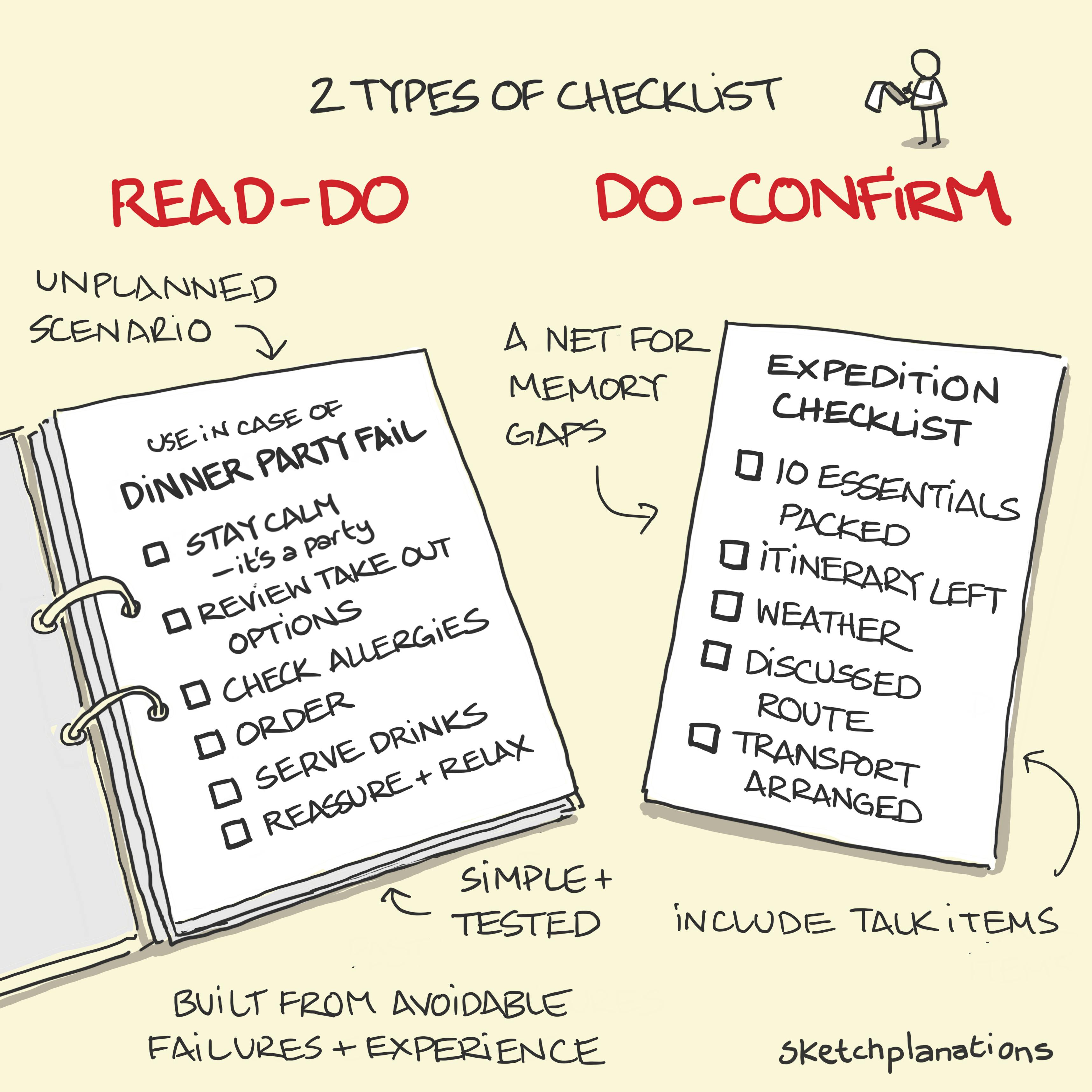Two types of checklists: Read-Do, Do-Confirm

- Prints
- Copied!
👇 Get new sketches each week
I always considered a checklist, a checklist, so I was interested to learn the distinction between two types of checklists: Read-Do and Do-Confirm.
A Read-Do checklist might be prepared in advance for several potential possibilities. You check off the tasks as you do them, like following a new cooking recipe. They may be geared towards helping people understand what they should be doing and in what order and helping them remember key steps in unusual or unplanned scenarios. So, for example, if a plane develops a particular type of rare fault, such as an engine failure, a Read-Do checklist could be pulled out for that scenario. The pilot and crew can use it to make the most of others' past experiences and failures. Even with training, given the situation's relative rarity, and especially if a serious situation might interfere with normal thinking, a Read-Do checklist helps steer the crew to safe outcomes without relying solely on training and memory. The calm security and simplicity of steps of a checklist can be just what's needed.
A Do-Confirm checklist is more of an aid to memory to make sure nothing gets missed. It's a safety net for normal operation catching lapses in memory. In principle, we know what to do, so we run through those steps from experience and memory and use the Do-Confirm checklist at a designated pause point to ensure we didn't miss anything. The WHO Safe Surgery checklist has helped save 1,000s of lives.
Because a simple checklist can never account for every unexpected occurrence in complex environments—for example, healthcare, aviation, building a skyscraper, or software projects—both checklist types can benefit from items that require a communication step. An item can just be to ensure that all those with the relevant knowledge have discussed things. It's a simple and powerful way to improve outcomes across a wide range of unexpected scenarios.
I learned about the simple power of checklists, the two types, and the resistance to adopting them—from Atul Gawande's, The Checklist Manifesto: How to get Things Right .

